There’s quite a few N scale train door layout plans on the blog – and here’s another from Erik’s son:
“Al,
This is n-gauge built on a hollow core door. It represents a part of Cleveland, Ohio, where the railroads cross the river. The river isn’t cut out yet. He writes:
Today was the day that a train ran on my new layout under computer control.
I have 14 servos controlling turnouts (I have 16 channels available and can inexpensively get even more expansion capability).
I have 4 separate DC motor controllers to operate up to 4 locomotives simultaneously.
The servos and motors/locos are controlled using pulse width modulation.
Servos can be turned to any of 4096 positions. They are limited to +-90 deg meaning that I have ~0.04 degree precision. My motor controllers feed up to 12v and 2 amps each with 255 speed settings in both forward and reverse. My test loco doesn’t start moving until about 25% power (pulse duty cycle) but has acceptable speed control with the remaining range.
It’s a golden time to be an electronics tinkerer. I built all this for under 200 dollars. I can even remotely log into the controller computer over wifi.
For comparison, a cheapish two channel Digital Command Control power system costs $200 or more and won’t even operate the turnouts. I have a better system, and I can leave programs running to provide hands off exhibition of complex operation on the layout.
It is cork roadbed. It’s glued and then sanded.
The bridges were fun to build. I still need to paint and weather them.
I don’t mind you passing on my message, but I can’t imagine who would be interested.
I’m in the process of arranging industrial buildings and multiple spurs to add visual interest and operational complexity. I am also planning road underpasses and overpasses as well as a kit-bashed factory building that spans over the main line as informal “scene edges”.
There is a river that runs across the layout and is not shown (was not cut yet) in the photographs.
N scale train door layout plans:
“Al,
Once again I see a train which appears to be a runaway, possibly without an engineer. If modellers had an easy way to determine a train’s speed, that might help. Well, here is a tip which should help.
I came upon this table a while back. To use it, you need to measure out three feet (or one meter) of track. You also need a timepiece with a second hand. If you run N scale, HO/OO scale or O scale, this table will work for you. Place a marker alongside your track, then a second marker three feet away. Run your train past the first marker and time how long it takes to reach the second marker. Use the table below to determine your train’s speed.
TIME TO TRAVEL 3 FEET AT SCALE SPEED
Prototype Speed N HO O
5 mph 65 sec 36 sec 19 sec
15 mph 22 sec 12 sec 6 1/2 sec
25 mph 13 sec 7 sec 3 1/2 sec
60 mph 5 1/2 sec 3 sec 1 1/2 sec
90 mph 3 1/2 sec 2 sec 1 sec
If you double the distance, then double the time. This will give you a more accurate speed. 1 1/2 seconds goes by pretty fast.
I hope this helps modellers to adjust their scale speeds.
Carl in Kansas”
And lastly Stephen has been in touch again (his last post is here). He’s finished!
Thanks to everyone for today’s post – it’s good to see some more N scale train door layout plans.
It’s wonderful to see your layouts, warts and all, transform in to the finished article. And who cares how long it takes? Pottering on your layout is half the fun.
Don’t forget the Beginner’s Guide if you want to get off the arm chair and get involved. Who knows, you may end in the Hall of Fame one day.
Please doo keep ’em coming.
Best
Al
PS Latest ebay cheat sheet is here.
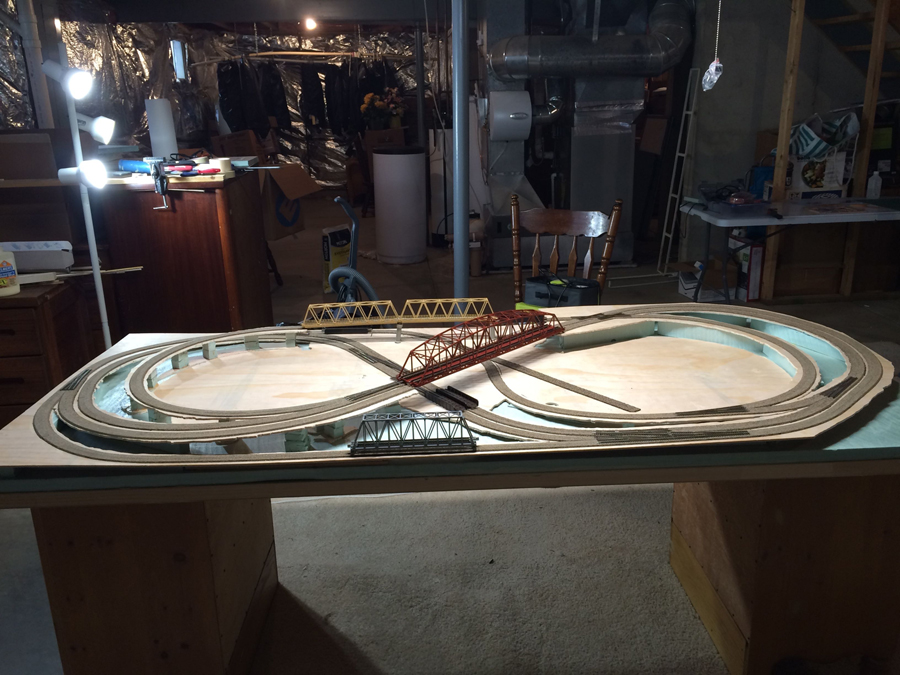
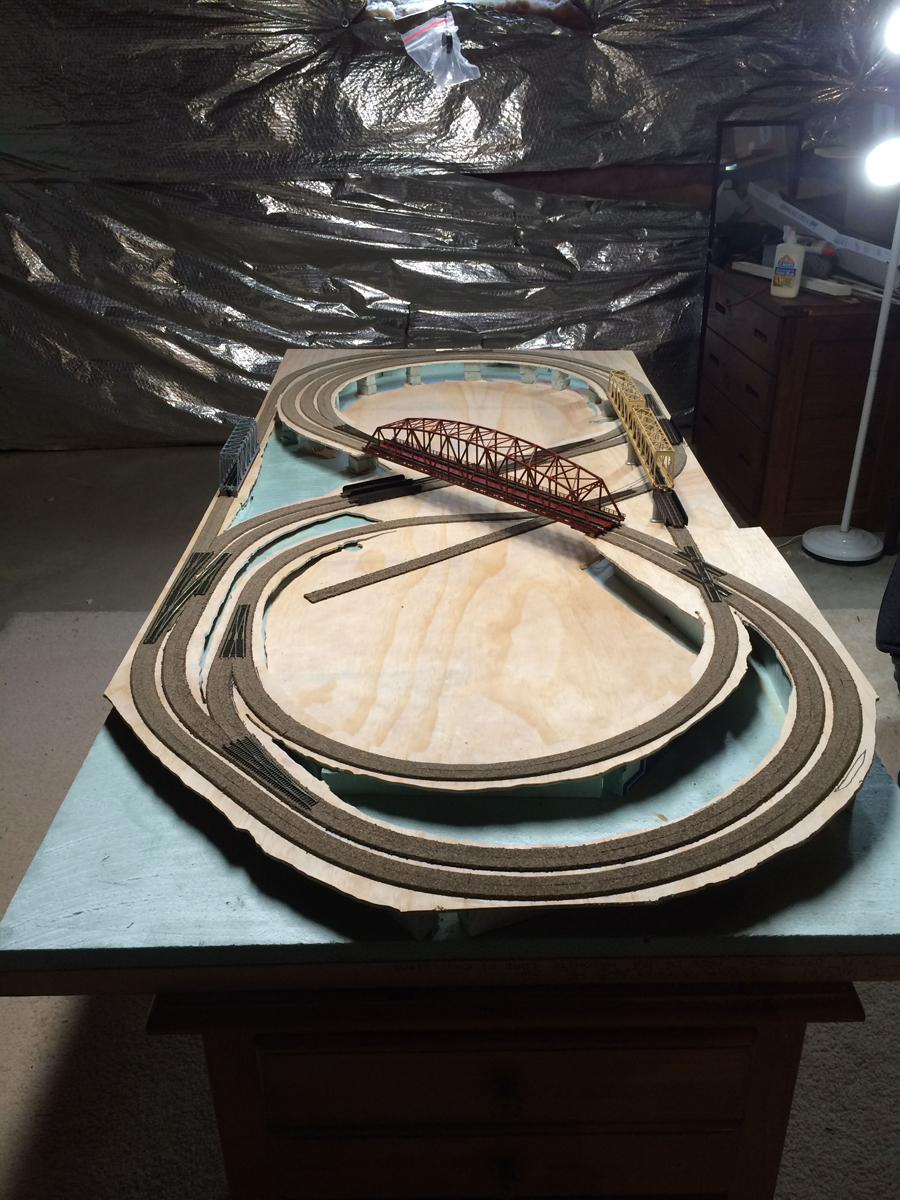
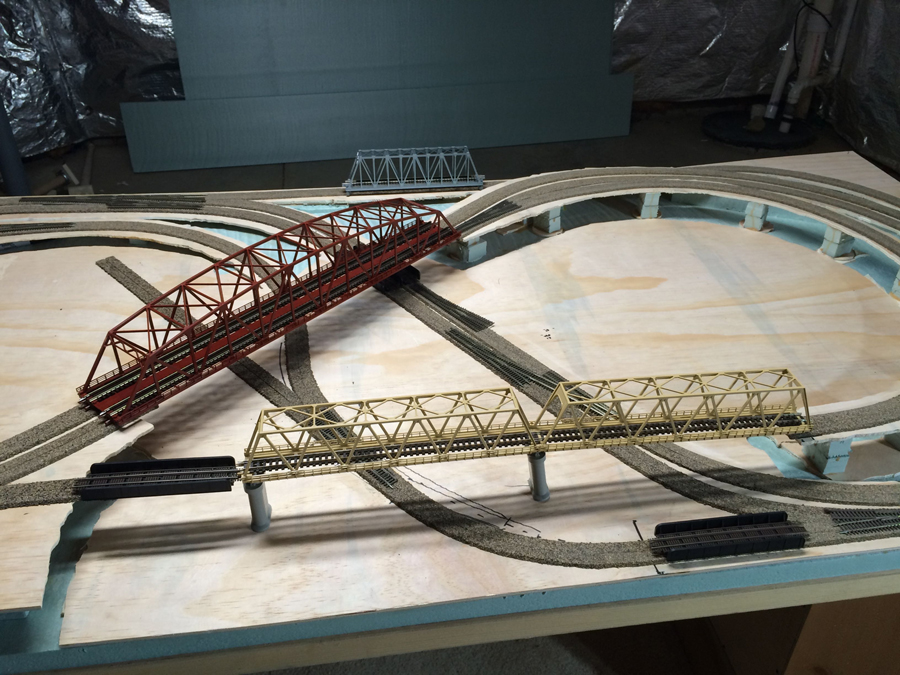
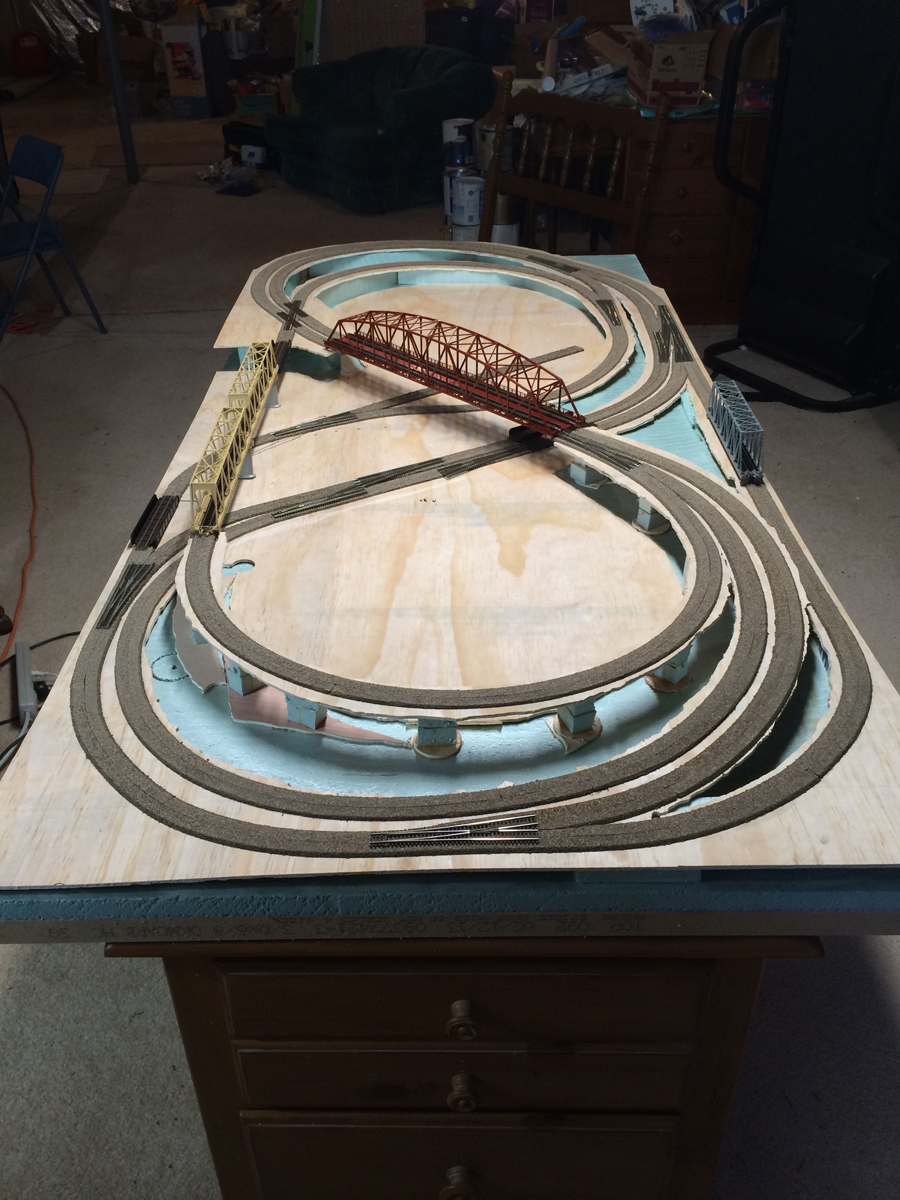
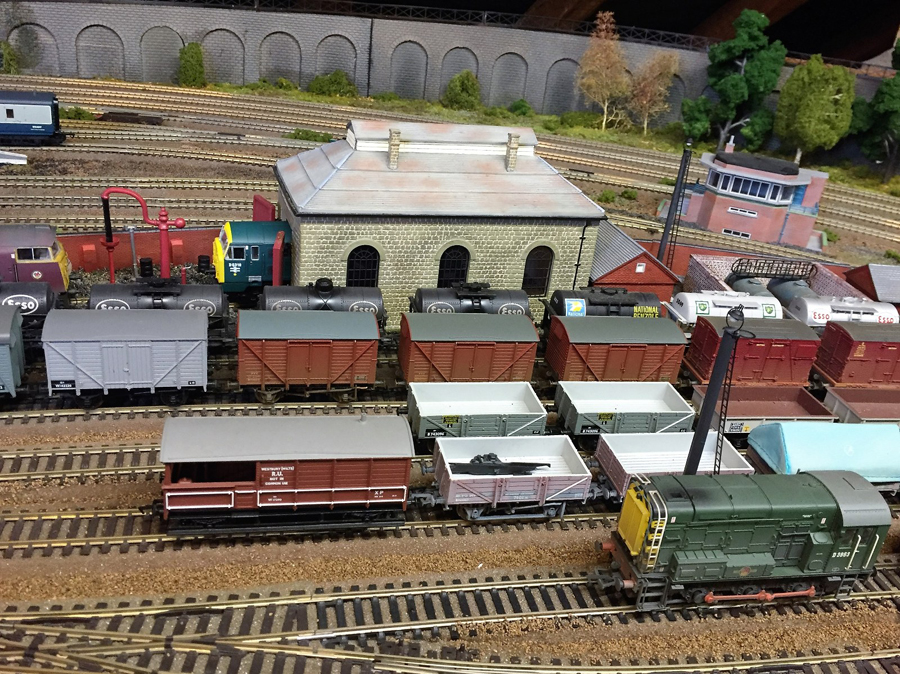
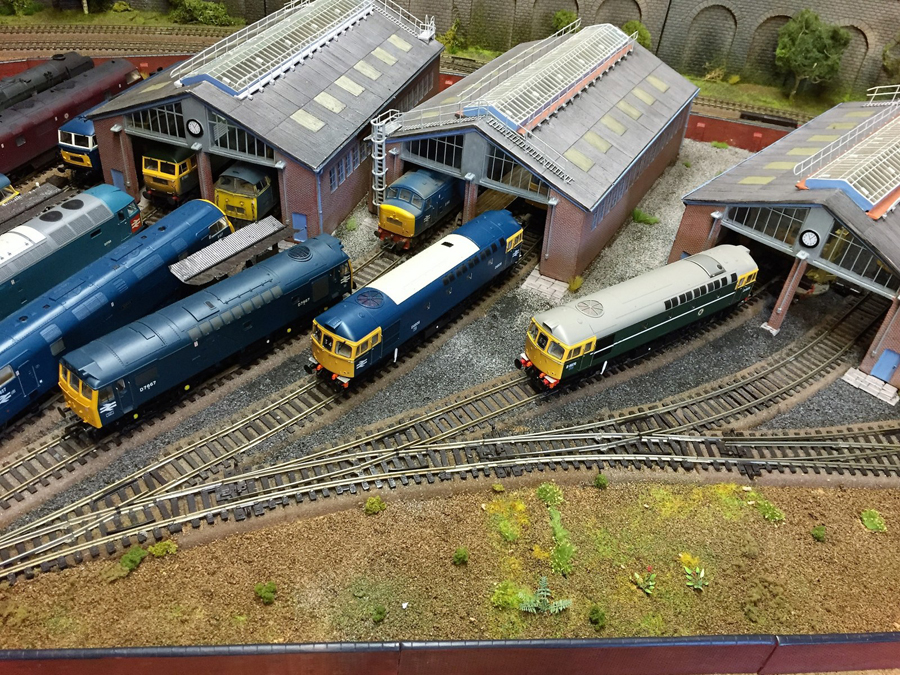
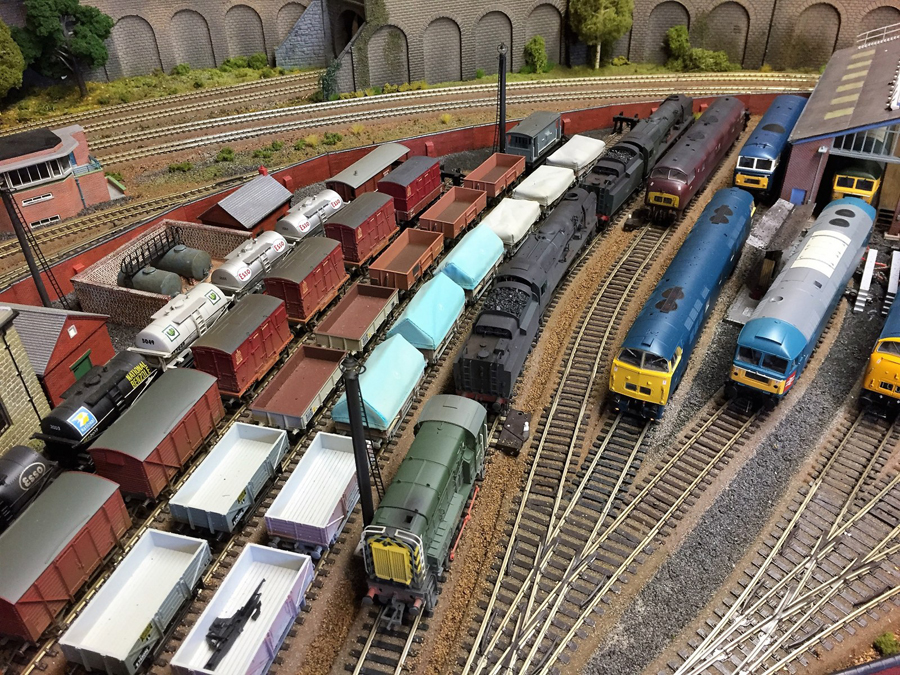
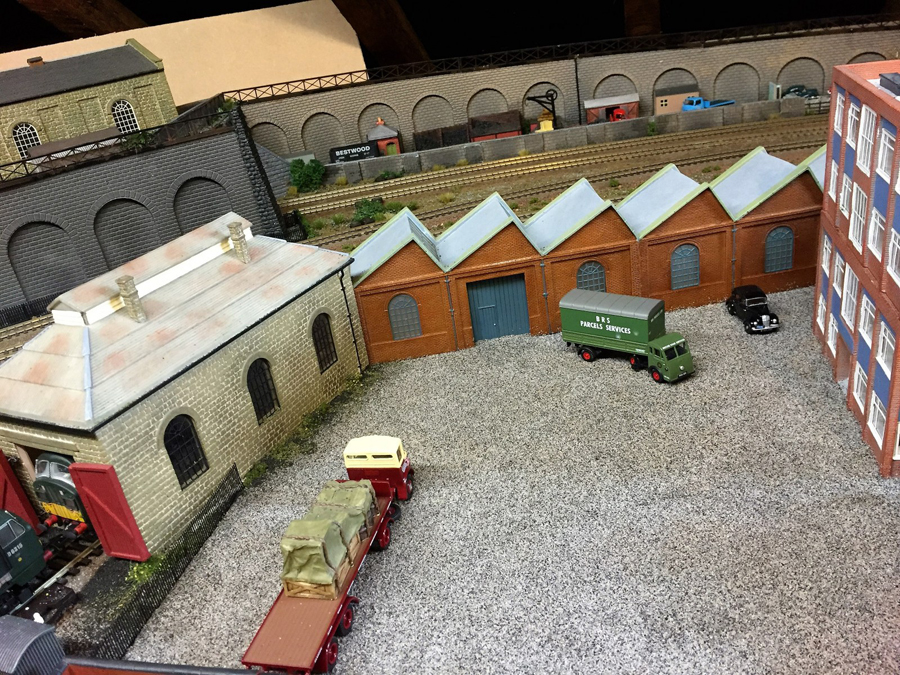
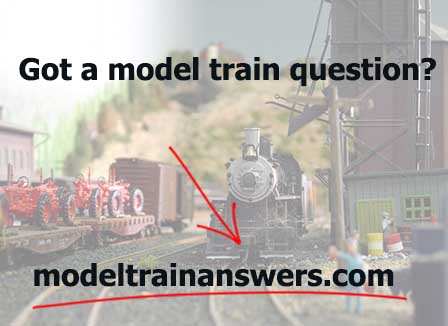

Nice job—- Good luck Vic
Using code 80 atlas on my smoky hollow junction layout I am having trouble with derailments , dead spots ,ect even on the switch tracks . What am I doing wrong? I check all joints but still have trouble . Is there a snap track that would work on this layout? It is designed for atlas code 80track .thank you I am a beginner . Mike
Beautiful work! Just beautiful. Cheers! NJ Mark
Thank you for publishing the scale speed info. This is far simpler than one I have come across before.
Sounds like Erik is using a Raspberry Pi or similar small SBC ( single board computer). I recently bought a Pi and servo control board and have been fidding around with turnot control. Adds another dimension to the facinating hobby of model railroading. Great work Erik
I have a used hollo core door I’ve wanted to do something with but never came up with any good ideas, until now. Very nice in a small space. Send more pictures keep us posted on progress
Bruce
I am also an electronic “fiddler” I use Arduino components (very cheap from China but you have to wait a while for them to get to you) and salvaged parts from old VCRs and the like. Lots of fun.
Good job on Erik’s sons layout.
Erik’s Son’s Layout – I heard about pulse width modulation the other day and how it improves low-speed running. I’d be really interested in exactly how you achieve that if you wouldn’t mind giving us more info.
Carl – useful information, thank you very much.
Stephen – Looking really busy (and lots of fun) there. Time to sit back and play methinks!
Al – thank you as always for bringing us these golden nuggets.
Mark J
hello just to let you know i have just started a ho lay out as a kid i started one but it did not last long i had to retire earlier then i planed because of a blood disorder so i am now taking my time to build a off the top of ur head fly by night ho scale track lay out system so far everything i have installed works fine , if u send me a fax number i can send u a plan of whats being built anyway just wanted to share info with you guys to let everyone know that sometimes without rhymes or reasons and even with a life ending major illness u can do anything u set your mind to have fun do not give up.
The ‘electronic tinkering’ control system sounds intriguing. It would be wonderful to have more details unless they are copyright and patent protected!
carl:
actually i am very interest in your alternative to dcc. is it possible to get a detailef description of what and how you implemented your locomotive and track lay out?
Very nice. I like it a lot. Thanks for sharing with us.
i am from Cleveland, Ohio…go Cavs! and your layout certainly captures the aura of The Flats…nice work…
You modelers are awesome!!
Nice layout. Thank for sharing.
Carl, What a great piece of information for scale speeds. I am going to use it. Thanks.
Love Carl’s computerized pcm control system. If possible could he provide more details? I have a postwar era Lionel layout o gauge but would like to see if O could adapt pcm control to it
I would also like to peruse the alternative to DCC. I. Used to program some PLC machines and am more familiar with manufacturing controls and controllers. If you share it you should probably try to share it but with some type of provision on the public use. Thanks for the update.
Is it actually finished? I didn’t think anyone ever finishes a model railroad layout! It looks pretty good. Keep up the work!!!
to the one from Cleveland,Oh.. Ya’ll oughta get the man that owns the “mistake on the lake”, Lebron James to do the same as Rod Stewart, build a model railroad layout, kinda use it as a place to draw kids and others into the hobby. Maybe you can get Mr. Haslam to donate his time and money, but better hurry his sentencing by the court is coming soon, kinda shame the both of them into making it work.
great pictures and tips they all help in this great hobby I find it hard to believe to hear a layout is finished.
Easier way to judge the speed of your trains – watch a particular rail joint as the train passes and, as each wheel passes over it, just say “tonk” to yourself. If you are going “tonk-tonk, tonk-tonk” and it sounds like the trains you know and love, smashing. If on the other hand, you can hardly keep up and it sounds like demented stammering, you’re going WAY too fast. Simples!
Rod
This is alot like atlas bershire layout from king size layouts for HO it’s a great layout nice job.
For Mike:
First off, “Welcome to the world of model railroading.”
The major cause for trains derailing in both Prototype and in models is because of uneven tracks.
1.) Take your track and lay it on a flat table and slide your finger tip along the track length. If you feel your finger tip dip or snag as it is moved over a joint where one track meets the next track, it generally means the you have two different track codes. Or you may have one rail not seated properly in the rail joiner, (a.k.a. fish-plate). At turnouts where the movable rails make contacts to divert the train to another section of the layout, make sure that the inside side/edge of the movable track allows for a smooth transition from one rail to the diverted section. If there is a blunt end contacting the rail, it may cause a derailment You may need to take a small jeweler’s file to make a smooth
transition point.
2.) Another thing to check for is the spacing between the rails. What you want is to make sure that the space is equal from one end of the track section to the other end. A properly stocked hobby shop that deals in model railroad parts and supplies should have a track gauge that you can buy, that allows you to check for the proper spacing between the track rails.
3.) The next thing that I would check for is to see if the tops of the tracks are at equal height. Best way to check is to have the track laid out as you want it, then place a small carpenter’s level across the track, from one rail to the other. If the bubble centers in the middle of the level, you are okay at that track location. If the bubble is off to one side then you need to raise the other rail. by putting a thin shim(s) under the low track side to bring it up to the level of the higher rail. A good shim could be made from narrow strips of a 3″ by 5″ index card. The only time that it is desirable to have one rail slightly higher than the other rail is in curves. It is here that the outside rail would need to be slightly higher than the inside track rail and you are running the train at a high speed thru the curve.
I hope this is helpful information.
R. Olivarez
Details and displays look great
is it finished?? of course not haha !! yes this is never finished rather that it is workable and realistic enough to operate. There are loads of smaller details such as more machinery grime,dirt and people to add yet to name a few. I am now moving on to the station entrance previously shown as platforms only with buildings One of the many things I am learning is very regular cleaning of track and point
blades is very important for smooth realistic operations – tedious but vital!. Many times when I think an engine is not running as it should it is usually this reason. I can recommend proper track cleaning chemicals which are easily applied and very effective rather than just using a rubber, hope this helps. Great work everyone Regards Steve
What kind of control system? PC based? Any specific system and recommendations?
Looks great
for the record the layout is old fashioned analogue! I have nearly 100 locomotives split up into 3 eras so I can change every so often the whole look of the layout.
This is the first time I have built a layout from a train set on boards and buildings. I thought as I started 10 years ago that DCC which was in its infancy then was too risky and too expensive for me. One day in future I might decide to change over but it will be expensive converting all the engines. I am trying my best with limited ability to make it as realistic as possible with analogue point motors are mostly hidden and isolating section are mostly hidden giving an acceptable realistic operation in sheds and stations. I think DCC with sound is amazing but it will be a future project for me. I use 2 amp controllers as the layout is quite large with two power points at opposite ends of the layout per track which works very smoothly I find providing you keep the track clean which is the same for any system!
Eric’s sons layout. Great adaptation of the HO scale track, Granite Gorge and Northern! I’ve always wanted to build it myself, just never the space! Nice use of the electroncs! Keep Ups Posted!
Great layouts and technology. And of course, Stephen is only “done” for the day. Tomorrow may bring new tasks….
To Mike, you may want to check the wheels with your low height track. Rolling stock that easily navigates through 100 code track, may have an issue with 80 code, especially if using older plastic “pizza cutter” wheelsets
MN Dan.
Oh ANOTHER FIGUE 8 AEI u got me dizzy.
Rail speed limit on the Hudson River line in NYS is 70-80 for passenger trains, where designated and for loaded freight 60-70 mph on straight runs. On curves as speed limit changes. For passenger cars..40 mph for freight.
The Critic
Erik,
Great looking layout. Amazing what you can do in a small space with N-gauge.
Please send more info about ypour electtrics and acopy of your layout.
Regards,
CA Allen
Can you share the track you used (plans)
Erik.
I too have used PWM to control engines. Yes, they don’t always start at low voltages. My solution was to program the engine with a short burst of higher voltage when starting before returning to the desired speed. This will overcome stiction and allow the engine to run at much lower speeds. If the engine runs at low speeds when reducing voltage then this solution will work. You will need to experiment with how high and how long to provide the burst for each engine but it really does work well.
Good luck.
Erik, Great layout and interesting electronics! When can we see a video of those locomotives running under computer control? Also, more details of how you built the pulse width modulation controls would be helpful for us non-electronics engineers.
Looks great. I hope mine turns out that good.
I enjoy seeing all the efforts to create themes and life-like stories on the layouts. I wonder if anyone modifies their scene to show passing of time. Do the figures and/or vehicles get moved? Example. A car and camper are shown at a house being prepared for a vacation. Later, the car and camper are enroute. Next it is shown at the campsite. Etc.
Just wondered if that aspect is done.
MRC Has a program called MRC Prodigy Computer Interface V 1.1 I downloaded a few years ago. Works with Windows. I ran it on a small Tablet and also on a Laptop. you can control Trains, switches, routes and accessories. It does require a USB interface. There are other features. Not sure if this program is still available. I think Digitrax has a similar program.
Looks really good. I’m in the process of making mine. How do you figure out the grade for the track. I’m new into this thanks
Al,
I’m not sure how current the site and page is right now. But, I really like Eric’s sons layout set up pictured.
Erik’s son’s layout
modelrailwaylayoutsplans.com
cropped-logo512X512-180×180.jpg
I’ve tried to visually run the routes from the photos to determine if there are any reverse loop wiring situations which might occur. But I can’t really determine if there are any by visually trying to trace the route of the roadbeds. Are there any track plans or wiring diagrams for that layout? I find it interesting and lots of possibilities for scenery etc.
I would greatly appreciate any input or suggestions or contact information. I’d like to build it in HO rather than N scale.
Thanks! All the best to you!
John
This is by far the most incredible group/site, and certainly The first thing that I read each day! Thanks to Al, everyday!
Thank you Carl for the speed chart. I take s screen photo of the things that I want to review once I make the proverbial START to build!
Thank you R.Olivarez for you track check list. I recently used a 36” section of old vintage track to “test” some inexpensive freight cars after changing out the couplers and plastic wheels. I realized that despite the ever so slight minor lateral bends, from previous use on a layout, there were indications of vertical indentations. I tried the level idea suggested and the depressed rail areas showed up immediately! Some things can be solved so simply, when thinking outside of the box! Thanks to all contributors!!!
Someday, if I ever edge towards understanding more about DCC, I’ll start collecting tips, comments and ideas 🤔
I grew up in Cleveland and remember the old industrial flats and the rapid transit system. Nice job!
I’m sure my I Q just went up another notch just reading this post. Great N scale layout…can’t wait to see the finished result.
Never knew how to measure the speed of the train. Just used some lousy guess-work. Your speed and time table really puts the motion of the train in perspective. I’m going to use it. A big thanks.
Harold.
very nice layouts.
It’s a new age dawning in model railroading. Some of us know how to use microprocessors, digital controllers stepper motors and servos (etc), but for the young people entering into the fray, they not only can use these items, but their whole approach is different, with the mapping of technology often being the first and most important step, and everything else following suit. Nothing is impossible or so difficult or expensive that it’s not worth the trouble anymore. It’s just a matter of will and design approach. It’s not too difficult for your average enthusiast. It is just a matter of embracing the technology and reading up on techniques for interfacing with the equipment. On the other hand, I say this while I still do everything the old way, with DC powered rails and simple locomotives. Many of us don’t want to change, and there’s no reason why we should have to do so. But there are so many choices….
Fascinating. Will follow til I understand PWM.
Hello, say, that’s a version of the layout I’m planning on building without all the computer control. Looks good!